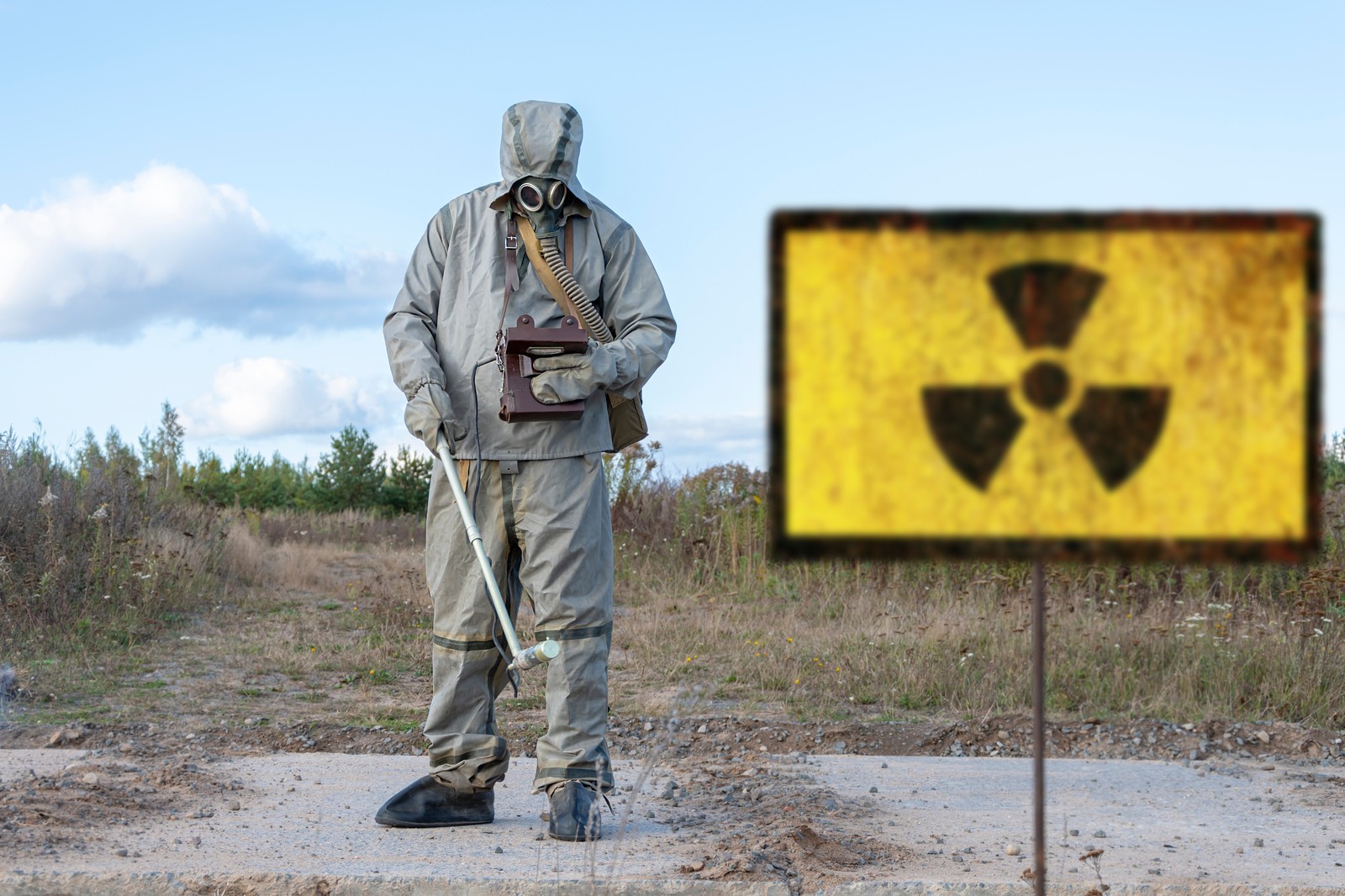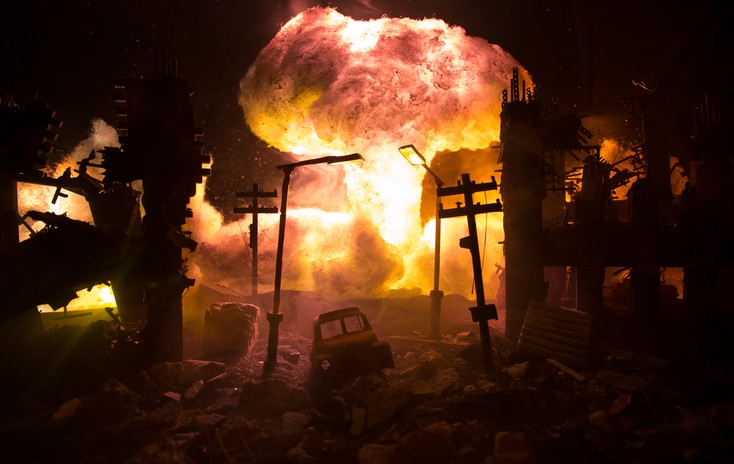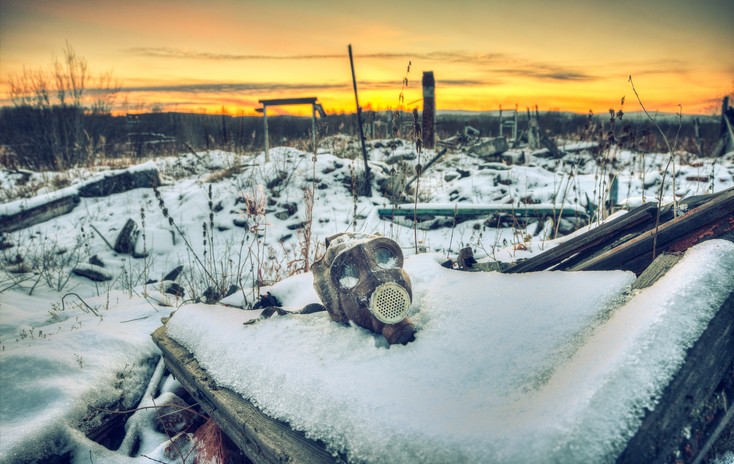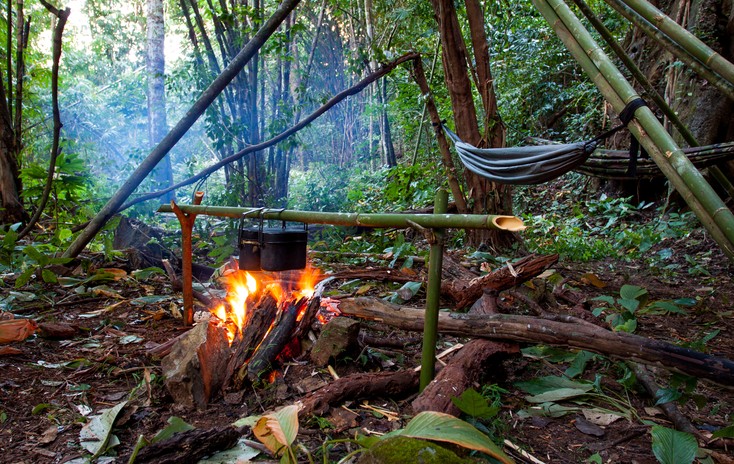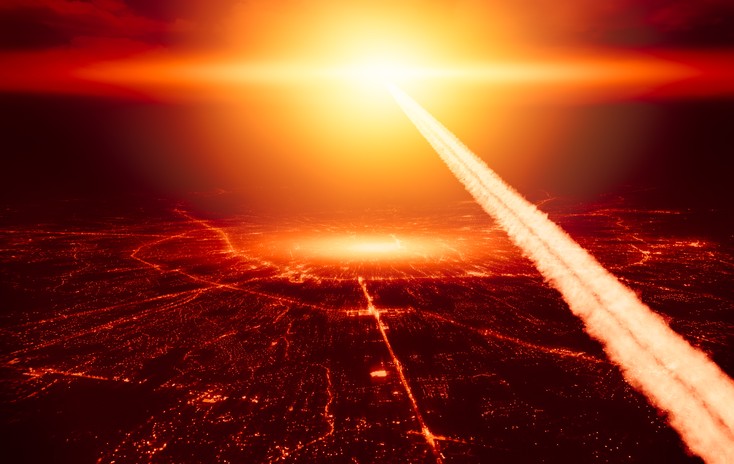Measuring Levels of Nuclear Radiation
Measuring Levels of Nuclear Radiation
There is no way to detect nuclear radiation with just your five senses, even at fatally high levels of radiation. This leaves two ways you can be informed about any levels of radiation that may be present. Either measure it using a specialised measuring device, or obtain information from someone else with access to measuring equipment (such as by listening to the radio). If you can measure it yourself you'll be able to get much more localised information, about the levels of radiation right where you are.
There are many different gadgets that can be used for measuring radiation, if you look around the internet it can be a bit confusing. There are survey meters vs. dosimeters; high range vs. low range devices; and devices to measure alpha, beta and/or gamma radiation.
Survey Meters vs. Dosimeters: This is like the speedometer in your car vs the odometer (the counter that says how far you have travelled). The survey meter is like a speedometer, in that it measures the rate, or level, of radiation. The dosimeter is like an odometer, it measures the total amount of radiation that has been absorbed over a period of time.
High Range vs. Low Range: This just refers to the levels of radiation that the equipment is meant to measure. Typical peacetime levels are much lower than wartime post-bomb levels, so much so that a lot of the usual devices for measuring radiation in peacetime will not be able to read high enough for wartime use. This includes most (perhaps all) of the true "Geiger counters" with an actual Geiger-Muller tube as the part inside the meter that does the actual measuring. The high range survey meters are sometimes called "Geiger counters" but they aren't really Geiger counters as such, because they use a different method (an ionization chamber) of detecting the radiation. (More details here for the technically interested readers.) The main thing you need to know is that for high levels of radiation (such as for fallout after a nuclear bomb) you need a meter that's capable of measuring high enough. A lot of the high range meters (especially the old CD V ones - see below) will only measure high levels of radiation. A true Geiger counter is sensitive enough to measure the normal very low-level natural background radiation that is present all the time (think of seeing movies where the counters is going click, click, click).
Alpha, Beta, and Gamma Detectors: This isn't that much of a problem for nuclear fallout, since almost all of the danger from radioactive fallout comes in the form of gamma rays, and (as far as I know) any of the meters can detect gamma rays. Gamma rays have the most penetrating power, it takes 9 centimetres of packed earth (or anything weighing the same as that) to halve their intensity. Every 9cm of earth will halve the intensity, so with 18cm of earth you have 1/4 the intensity, 27cm will allow 1/8 of the radiation through, and so on. Some of the detectors can also detect alpha and beta particles but you can forget about this when beginning to learn about fallout. Alpha particles are so weak (in terms of penetrative power) that a sheet of paper will block them. Even a few centimeters of air will block them. They are only dangerous if you eat something that's emitting them (such as fallout dust). Beta particles may travel metres in air and several millimetres into the human body. Most beta particles may be stopped by a small thickness of a light material such as aluminium or plastic. Beta particles can give you "beta burns" to exposed skin, but this is much less of a worry than the deadly gamma rays.
CD V Radiation Detectors
The picture below shows some radiation detectors, the CD V-715 high range survey meter at the back, the CD V-700 low range survey meter / Geiger counter at the middle right, with the CD V-705 powered speaker attached to it, the CD V-750 dosimeter charger in the middle. The lunchbox at the front left contains some dosimeter pens (CD V-138, CD V-730, and CD V-742) and the original headphones that plug into the CD V-700 Geiger counter. The orange plate was made pre-WWII and its glaze contains uranium oxide, meaning that it's radioactive. People used to eat from these and according to Wikipedia "the red glaze emitted far less radiation than some other consumer products". The plate is used as a radiation source for testing the low range detectors.
 |
The most popular types of detectors in terms of numbers made are the "CD V" series of equipment. There are survey meters and dosimeters. The most popular survey meters are the low range CD V-700 (which is an actual Geiger counter) and the CD V-715, which is a high range survey meter designed for wartime use (not an actual Geiger counter though they are often called that). If you do a Google image search for Geiger counter you can see that these are quite popular. According to the Civil Defence Museum, 567,457 of the CD V-715 units were made. There is also the CD V-717 which is the same as the CD V-715 but has the extra feature of a removable baseplate which contains the detector, attached to a 25-foot long cord. This allows you to place the detector outside your shelter and view the scale safely from inside. For post-bomb use in medium or high fallout areas, the high range meters (e.g. CD V-715 or 717) are what you want. You can tell if the meter is high or low range easily by looking. The low range CD V-700 has a round chrome (silver coloured) handle, which contains the Geiger-Muller tube. The G-M tube can be removed if you want to point it right up next to a radioactive source. You can also see the grey cord that connects the G-M tube to the unit wrapped around the handle. The high range meters (such as the CD V-715) have a yellow painted handle and no cord.
There are also dosimeters, which look like (usually yellow) pens, complete with pocket clips to go in your pocket, just like a pen. The dosimeters need to be charged with a charger such as the CD V-750 dosimeter charger. You can see more about these here including information about the different types of dosimeter pens and how many they made (literally a few million).
The CD V series of equipment was made in the cold war, so most of it is quite old now. The meters can be bought cheaply online however the accuracy of the meters may not be known. The survey meters need to be calibrated every several years (that is, have their accuracy tested and, if necessary, adjusted internally). With high range meters (such as the CD V-715), you need a really strong radioactive source to calibrate them, much stronger than ordinary people are legally allowed to own (or would want to own since they would be deadly if you were exposed to them). Uncalibrated CD V-715 meters are going on eBay for around the $30-50 range currently. You can also buy fully calibrated and checked ones, for a lot more (around $300). Occasionally meters come up for sale that have been calibrated semi-recently, say from 5-10 years ago, and these sometimes go quite cheap ($40-100). Consider that most of these meters were made in the early 1960's, which is over 50 years ago. A meter that was known to work accurately 5-10 years ago is going to be much more likely to still work and be accurate than a "never opened - still in the box" meter that was known to work 50+ years ago and has never been looked at since. There is also at least one service where you can send in your meter for them to calibrate. They also sell some gear, but most of it only to the USA, though they have links on their site for resellers, some of which ship to Australia (and internationally). Plus a lot of other information about nuclear war survival. See ki4u.com for more.
The dosimeter "pens" age with time and start to fail. The main problem is that they start to "leak" out the charge, which means that the scale climbs up as if they were detecting radiation, but even when there is no radiation. I bought 20 of these quite cheap (I think they were $3 each), and it looks like about 1/3 to 1/2 of them will be usable. I'll put up some results of testing of them soon..... You can buy brand new ones for $150 each, which is a lot more than $3 each. The dosimeter chargers don't really age or go out of calibration, they will work or not (and most of them probably still work). They have a torch-style light bulb which can burn out, and there is even a spare bulb contained inside the case.
All of the abovementioned devices run on D-cell batteries.
There are modern digital devices that can measure a large range of radiation (both high and low levels), however these are expensive, around $1000 and up.
Build Your Own Radiation Detector From Simple Household Items
Finally — believe it or not — there's actually a radioactivity meter that you can build yourself from simple household items. This is called the Kearny Fallout Meter, or KFM. The construction is meant to be of the difficulty level that a junior high school age child could build one. There are some kits available or you can make up everything yourself. Detailed instructions can be found in the book Nuclear War Survival Skills (see below on this page), or look online. There are a few YouTube videos about these.
There are three huge advantages of the KFM over any of the electronic products (like those mentioned above): One is that no power (e.g. batteries) are required. Two is that they never need to be recalibrated. Three is they are 100% EMP-proof (more on this later). Though there is a need to keep the internals of the meter dry, since moisture will affect the accuracy of the reading, and usually some type of drying agent (such as silica gel) is used for this. The CD V meters above are sealed with rubber gaskets to keep them dry inside (apparently they will float on water, though if the rubber gasket is 50 years old they might leak). The main disadvantages of the KFM are that they are somewhat more cumbersome to operate — it's not as simple as turning on a switch and reading a meter dial — and, apparently, they look so primitive and low-tech that people underestimate how useful they really are.
I've bought one of the KFM kits from BA Products, who ship to Australia quite cheap (like $10). I'll take some photos as I assemble it and write it up on the website (when I get time)....
Cover image by Anelo.
Surviving the collapse of modern society would require a mix of practical skills, knowledge, and mindset. Here are some of the most important skills: Basic Survival Skills: ...
A Nuclear Strike On One Single City
Due to the speed at which nuclear war is expected to escalate, an isolated nuclear attack on just one single city is probably somewhat unlikely. Here we consider a fictitious scenario assuming such an attack...
Kallan and the Thunder Beast
The Encounter In a lush, untamed world where the ancient and the primeval collide, a young warrior named Kallan prowled the dense forest. His long hair, knotted and wild, cascaded down his back, a testament to...

 Welcome to Prepping.com.au, the new web magazine.
Welcome to Prepping.com.au, the new web magazine.
 What is Prepping? A guide for normal people to get started.
What is Prepping? A guide for normal people to get started.
 How to use this site. When all else fails, read the instructions.
How to use this site. When all else fails, read the instructions.
 This is your mission, should you choose to accept it.
This is your mission, should you choose to accept it.

